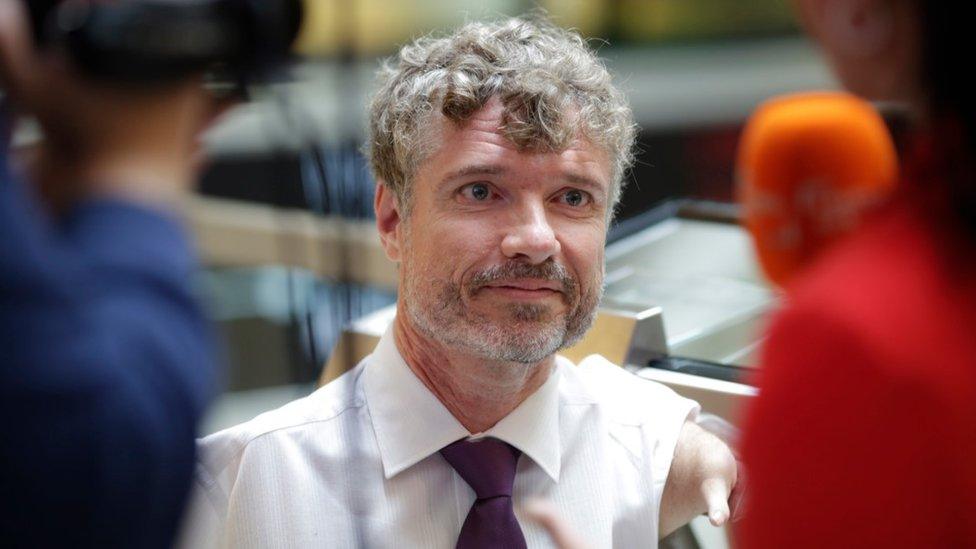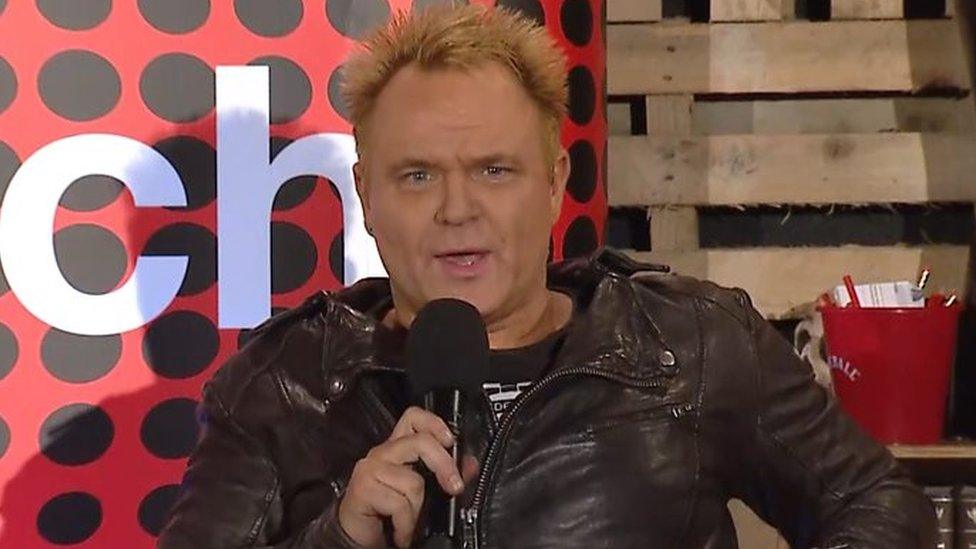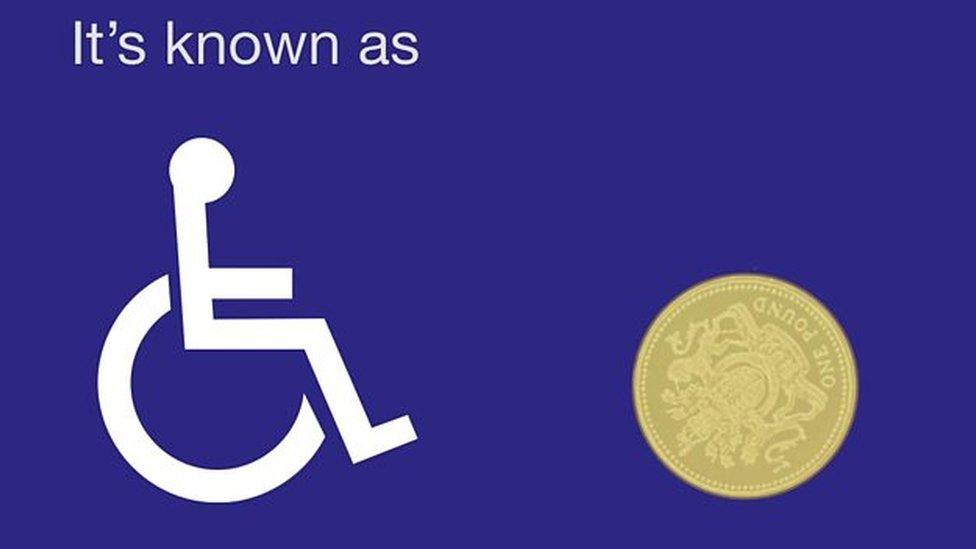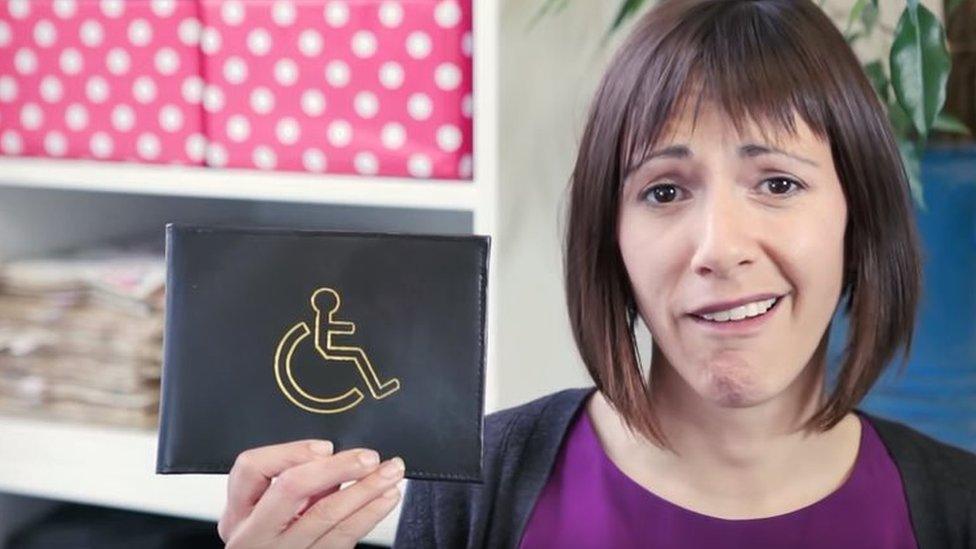'Shopping can be so embarrassing for me'
- Published
"It infuriates me that we're in 2018 and we still have to go: what about us?"
Shopping can be frustrating at the best of times, but for many disabled people it comes with even more unnecessary challenges - narrow aisles, no step-free access, rushed shop assistants.
But one businessman and wheelchair user has turned his frustrations into a national event - Purple Tuesday - in a bid to get hundreds of retailers to improve their customer experience and tap into the £249bn disabled customers spend each year.
For Holly Greader, from Cardiff, going shopping is like "tackling an obstacle course".
Like many other 21-year-olds she's interested in fashion with a keen eye for a bargain, but as a wheelchair user she's often left frustrated by the barriers she faces on her local high street.
"I've got money that I want to spend, but, due to the fact I can't even get into some shops with steps, they miss out on my cash," she says.
Once she's in a shop, she often finds accessible changing rooms are filled with stock, tills are out of her reach, and many retailers are simply unaware of the needs of her and other disabled customers.
"If staff thought a bit more about my needs and saw me as a proper person rather than a problem to deal with then I think that would make shopping a lot better for me," she says.
It's a frustration felt by many and it translates into hard cash.
According to the Department of Work and Pensions, of the estimated £249bn disabled people spend each year - the so-called Purple Pound - it is believed only about 10% of that is being realised by retailers.

Mike Adams says disabled people want to feel like people first, who just happen to have a disability
That's the trigger behind Purple Tuesday - a day to make customer-facing businesses in retail more aware of the challenges faced by disabled customers.
It's something entrepreneur and wheelchair user Mike Adams created out of his own experience.
"I used to get taken on my school 'Happy Bus' as we called it, from my special school in Sussex once a month to the nearby town.
"We were taken into a shop for a special treat where we were able to spend any pocket money our parents had provided."
He said the shop treated their arrival as a "special event", which he hated.
"I very much felt like a disabled person, rather than a person first who happened to have a disability," he recalls.
Mike says that while the retail experience for disabled people in 2018 is a lot better than when he was a child, he's also very clear that retailers still need to do more.
"Shop staff are still unsure of engaging with me," he says. "This isn't through prejudice, but more a fear of offending me through the use of the wrong language or etiquette."

What is the Purple Pound?
The power of the "purple pound" explained

Though communication needs some more work, he says physical access is also still an issue and, though many stores now have ramps or level floor access into the building, the crowded layouts inside make it very difficult to get around without causing damage.
This is something Holly knows only too well.
"Small aisles are virtually impossible to navigate," she says. "If I'm in a clothes shop and there's a sale on, the sale items are usually clumped together making it very hard for me to get to them. I have to ask a member of staff which is embarrassing for me."
Mik Scarlet, a fellow wheelchair user, is a consultant who advises businesses about best practice for disabled access to their stores. He says there needs to be a two-pronged approach to access needs for disabled customers.
"First you need physical access," he says. "Then you need staff trained to assist disabled people to shop as they wish" and points out wheelchair users make up only 10% of the disabled community.
"The rest," he says, "can access the building but need assistance to shop. This is where a lot of businesses let shoppers down."

It's important that shop staff are trained to assist disabled people, says consultant Mik Scarlet
Scarlet says describing clothes to visually impaired shoppers, learning some sign language or giving people with speech impairments time to ask questions would improve the experience.
"Just giving good service all round makes a business accessible without spending fortunes on redesigning buildings," he says.
Those with hidden disabilities can also find shopping a challenging experience, something the National Autistic Society agrees with.
A survey it conducted found 64% of autistic people avoided the shops and "shockingly" 28% of autistic people have been asked to leave a public place for reasons associated with their autism.
It says: "Like anyone else, autistic people and their families want to have the option of going to shops, whether to pick up the weekly shopping, buy a coffee or browse with a friend."
Purple Tuesday is being supported by hundreds of retailers across the UK, including Sainsbury's, Marks & Spencer, Asda and Argos and will involve thousands of members of staff getting some extra training and support to help them in future awareness.

Holly hopes Purple Tuesday will help retailers in the long term and not just be about one day
But some disabled people have questioned if there needs to be a day like this at all.
Kathy Bole, chair of the Suffolk Coalition of Disabled People, is sceptical about the concept and worries that retailers will think they've done their bit by being involved.
"It's all well and good having this day on 13 November, but what happens the day after that, and the day after that?" she says.
Holding it on a Tuesday has also raised eyebrows. Diane Wehrle from retail consultancy, Springboard, says it's one of the least busiest shopping days of the week.
"I don't want to have just one day where I might be comfortable going shopping. Disabled people need to be able to go shopping whenever we want," she says.
Holly, in Cardiff, is also somewhat cynical about the day, but is hopeful retailers will learn from Purple Tuesday and that staff will instinctively be able to help in the future.
"This should happen all the time and naturally - not just on a certain day or a certain time," she says. "As someone with a disability I just want to blend in rather than being forced to stand out and be different."

For more Disability News, follow BBC Ouch on Twitter, external and Facebook, external, and subscribe to the weekly podcast.
- Published22 February 2017

- Published28 February 2016
